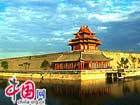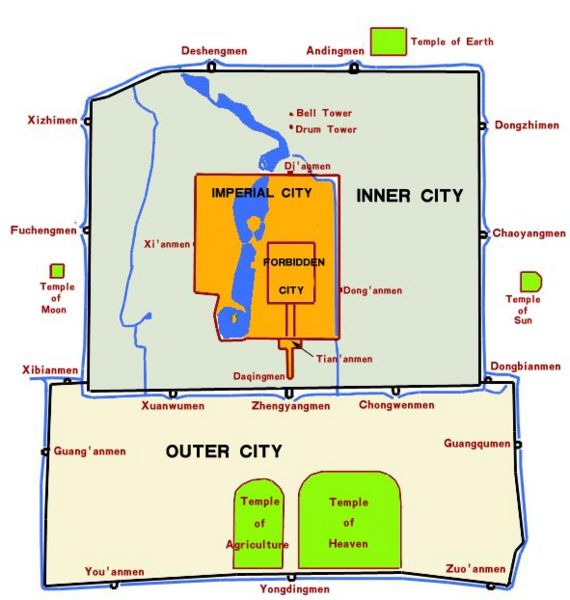| Videos | ? Latest |
|
? Feature | ? Sports | ? Your Videos |
The charming Fobidden City in Beijing

The Forbidden City (Imperial Palace) in the heart of Beijing is the largest and most complete imperial palace and ancient building complex in China, and the world at large. Its construction began in 1406 and was completed 14 years later, having a history so far of some 580 years. Twenty-four emperors from the Ming and Qing (1644-1911) dynasties lived and ruled China from there. Most of the buildings in the Forbidden City were rebuilt many times, although they maintained the original architectural style.
The Forbidden City, extending 753 meters from east to west, and 961 meters from north to south, makes a rectangular shape and covers a total area of 720,000 square meters. It consists of several dozen compounds of varying sizes and some 9,900 bays of rooms, with a total floor area of 150,000 square meters. Most of the buildings were built with wood, roofed with yellow glazed tiles and built on blue-and-white stone foundations, looking solemn and brilliant. City walls were 10 meters high, and a 52 meter-wide moat surround the Forbidden City. Three-storied towers are placed at each corner of the wall.
The building arrangement within the Forbidden City is symmetrical. The Hall of Supreme Harmony, the Hall of Central Harmony and the Hall of Preserving Harmony, which comprise the outer palace, and the Hall of Heavenly Purity, the Hall of Union and the Hall of Earthly Tranquility, comprising the inner palace, stand in a line from south to north on the central axis. The 8 km central axis runs through the entire old Beijing city to Yongdingmen in the south and Zhonggulou in the north. The throne symbolizing imperial power is positioned at the center of this central axis.
The buildings of the Forbidden City fully embody the artistic features and style of ancient Chinese palace architecture, and can be called a masterpiece in Chinese, even world, architectural history. Today, as the largest museum of cultural relics in China, the Forbidden City, also called the Palace Museum, collected and displayed some one million precious historical relics from the Shang Dynasty (16th century -771 BC) through to the Qing Dynasty. It was made part of the world cultural heritage list in 1987.
 0
0 








